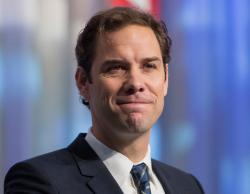The Brookings Institution is committed to quality, independence, and impact.
We are supported by a diverse array of funders. In line with our values and policies, each Brookings publication represents the sole views of its author(s).

Research
BPEA | 2004 No. 1

2004, No. 1
Africa’s development crisis is unique. Not only is Africa the poorest
region in the world, but it was also the only major developing region with
negative growth in income per capita during 1980–2000 (table 1). Some
African countries grew during the 1990s, but for the most part this growth
recovered ground lost during the 1980s. Moreover, Africa’s health conditions
are by far the worst on the planet. The AIDS pandemic is wreaking
havoc, as is the resurgence of malaria due to rising drug resistance and
the lack of effective public health systems. Africa’s population continues
to soar, adding ecological stresses to the economic strains. Policy-based
development lending to Africa over the past twenty years, known as structural
adjustment lending, did not solve the problem. A heavy debt burden
is evidenced by the 155 Paris Club restructurings of African countries’
debt between 1980 and 2001, much more than for any other region. In
general, Africa remains mired in poverty and debt.